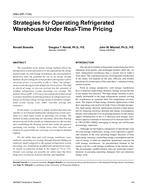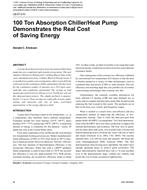This is a study of the dynamic, or time-variable, flow of heat into and out of the fabric of a building and the resulting temperature patterns of the indoor air. Much of the present practice in calculating loads and selecting equipment sizes is based largely on steady state assumptions and techniques. The actual heat transfer processes are dynamic because of the changing patterns of weather and climate. Therefore, analysis and prediction of hourly, daily, and seasonal building performance should be based on dynamic considerations. The theory and basic mathematics for the calculation of the transient heat transfer of such a system were first explained by Fourier (1), but the complexity of calculation and the time and expense involved have sometimes deterred architects and engineers from using such sophisticated procedures to design and evaluate buildings. Simplified steady state approaches have been and are to some extent still used in combination with engineering judgment.
Citation: ASHRAE Transactiosn, Volume 80, Part 2, Montreal, QC
Product Details
- Published:
- 1974
- Number of Pages:
- 23
- File Size:
- 1 file , 1.4 MB
- Product Code(s):
- D-MO-2325


